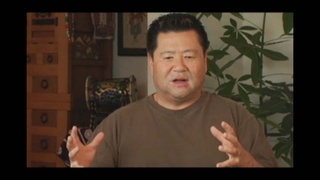Interviews
What is Matsuri Daiko? (Spanish)
(Spanish) We are a group of young people, not because of some age restriction, but perhaps the theme is the physical activity that we do that rallies us around one thing: we want to express, we want everyone to experience, and we want to transmit Okinawa culture through one of its cultural expressions, which is the eisa. The eisa is a very common Okinawa folklore dance in which the taiko is used but as a complement to the dance, like a complement to the choreography. What are we? We are a branch [of the larger organization]. In the case of Peru, we are a branch. Why? What happened was that the head office is located in Okinawa. This happened as a result of a group that had the idea of bringing together young people, to bring together their positive energy to cultivate and transmit values. Values, culture, dance, making [these] known to everyone in a new way, because of this they use a stylized music, a very attractive choreography, showy colors, and this is the reason by which, perhaps, the group has had sufficient appeal among young people.
Date: September 14, 2007
Location: Lima, Peru
Interviewer: Harumi Nako
Contributed by: Asociación Peruano Japonesa (APJ)





